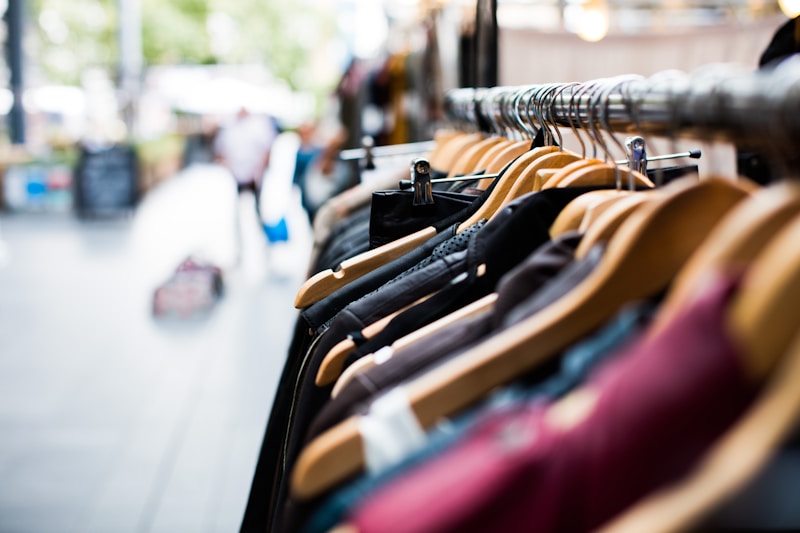The Importance of Acid-Free Materials in Dress Preservation
The Importance of Acid-Free Materials in Dress Preservation
Understanding Acid-Free Materials in Dress Preservation
Preserving a garment, especially those of historical or sentimental value, is a nuanced process that requires careful consideration of the materials used in the preservation process. Acid-free materials play an essential role in protecting dresses from damage that can occur over time. This article takes an in-depth look at the importance of acid-free materials in dress preservation, as well as some practical tips for incorporating these materials into your preservation routine.
What Are Acid-Free Materials?
Acid-free materials are specially designed to have a neutral pH level that does not contain acids that can cause deterioration or discoloration. These materials are crucial for preventing the yellowing and weakening of fabrics, particularly when it comes to delicate textiles used in dresses. When garments come into contact with acidic materials, they can suffer irreversible damage, leading to the need for costly restorations or even permanent loss.

The Degradation Process of Textiles
Over time, garments are prone to various forms of degradation. This can happen due to environmental factors such as light, temperature, and moisture, as well as the chemical composition of the packaging materials used. Common issues associated with non-acid-free materials include:
- Yellowing: Fabrics can develop a yellow tint when exposed to acidic paper or cardboard.
- Weakening: The fibers in textiles may become brittle and weak, making them more susceptible to tearing.
- Discoloration: Inappropriate storage materials can lead to uneven fading or staining of fabrics.
| Impact of Non-Acid-Free Materials | Outcome |
| Yellowing | Permanent discoloration |
| Weakening | Increased risk of damage |
| Discoloration | Loss of aesthetic appeal |
Benefits of Using Acid-Free Materials
The advantages of using acid-free materials for dress preservation cannot be overstated. Here are some key benefits:
- Longevity: Acid-free materials help extend the lifespan of your garments by providing an environment that minimizes chemical reactions that cause deterioration.
- Enhanced Appearance: Using acid-free tissue or wrappers can help maintain the original color and texture of the fabric.
- Safe Storage: Acid-free boxes, hangers, and bags provide a safe haven for dresses, preventing damage from external contaminants.
How to Choose Acid-Free Materials
Selecting the right acid-free materials is crucial for effective dress preservation. Here are factors to consider:
- Quality Certifications: Look for materials that are labeled as "archival" or "museum-quality," ensuring they are designed specifically for preservation.
- Material Composition: Cotton, linen, and certain types of pellet-free polyester are excellent choices for tissue and storage materials.
- Humidity Control: Consider materials that also offer moisture control, as excess humidity can exacerbate the effects of acid in non-acid-free items.
Practical Tips for Dress Preservation
Implementing acid-free materials into your garment preservation routine can be straightforward. Here are some practical tips:
- Use Acid-Free Tissue: When folding and storing dresses, place acid-free tissue between layers of fabric to prevent crushing and creasing.
- Store in Acid-Free Boxes: Opt for archival quality boxes that can accommodate the size of your dress and are made from acid-free cardboard.
- Avoid Hangers with Plastic Coating: Use wooden or padded hangers that won’t introduce harmful chemicals to your dresses.
Common Mistakes to Avoid
While preserving dresses using acid-free materials is relatively straightforward, there are mistakes that can compromise the process:
- Using Non-Acid-Free Materials: Avoid packaging materials that are not labeled as acid-free, including regular cardboard or plastic.
- Neglecting Temperature and Humidity: Ensure that preservation is performed in a stable environment, as fluctuations can lead to deterioration.
- Overstuffing Boxes: Be mindful not to cram too many dresses into a single box, as this can cause crushing and deformation.
Conclusion
In conclusion, the importance of acid-free materials in dress preservation cannot be overlooked. These specialized materials provide a safe environment for your garments, ensuring they remain in excellent condition for years to come. By choosing the right materials and employing appropriate preservation techniques, you can safeguard your dresses against the damaging effects of time and storage conditions. Remember to always look for quality certifications, check material composition, and avoid common mistakes to maximize the effectiveness of your preservation efforts. With the right approach, your cherished dresses can be preserved beautifully, allowing future generations to enjoy them just as much as you do.
In summary, prioritize acid-free materials in your preservation strategy to maintain the integrity and appearance of your garments. Regularly assess the condition of your stored dresses and make adjustments as needed to ensure they continue to be protected from environmental factors and deterioration processes.
